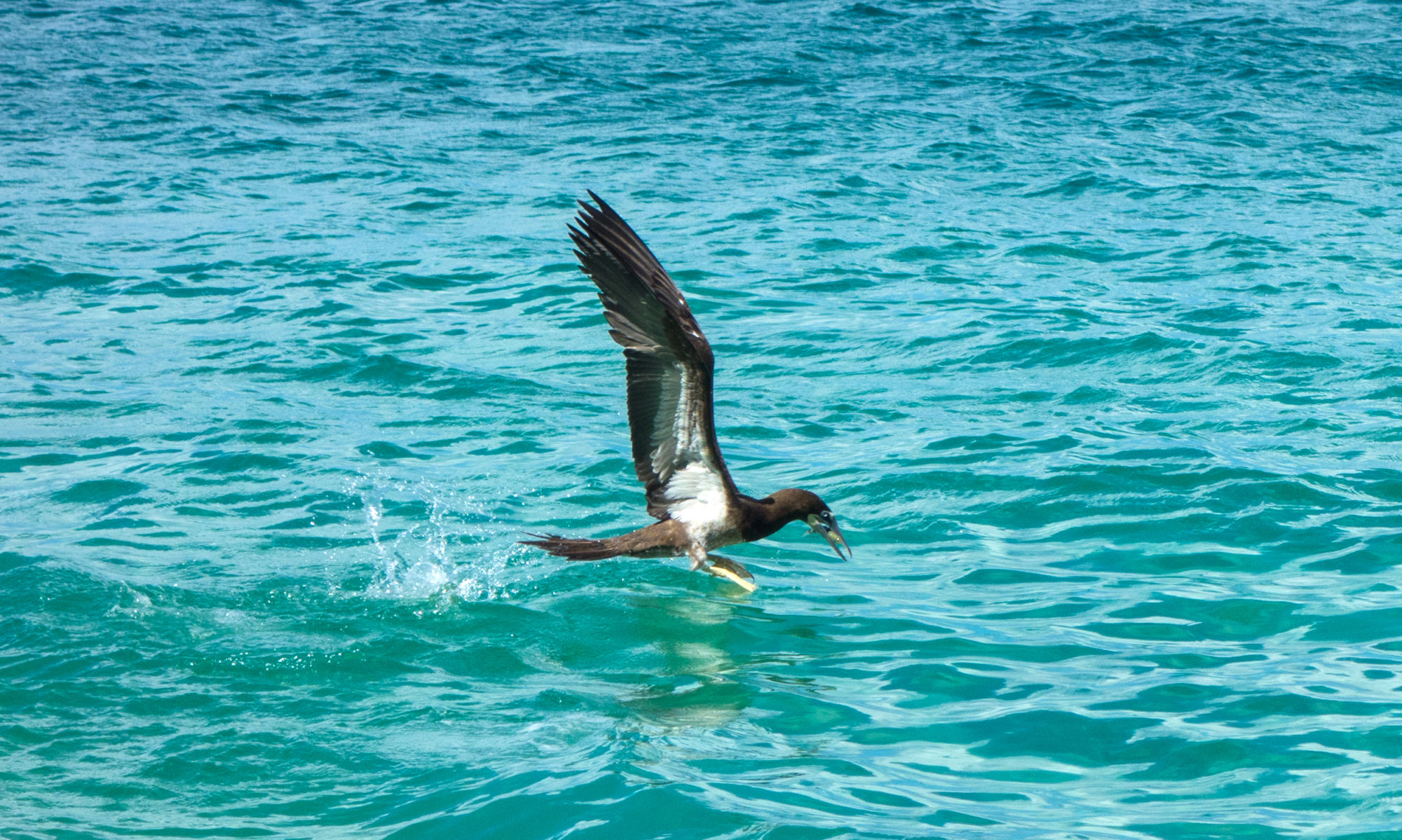There are lots of tortoises on Bequia and, although referred to as “land turtles” or “morrocoys”, they’re actually red-footed tortoises. Turtles are quite different; they live in and around water and have thinner, lighter and stream-lined shells more suitable for swimming, while tortoises have thick, heavy dome-shaped shells. The feet of a turtle are flipper-like, which helps it to swim, while tortoises have somewhat stumpy legs that resemble those of an elephant. These sturdy legs are important; the tortoise carries a heavy load on its back, and the strong legs allow it to lumber about in its search for food without collapsing from the weight of its shell.

Tortoises are interesting as well as amusing to watch. I often see them meandering along the main road without a care in the world, and wonder if they have any idea where they’re going at such a leisurely pace! To the beach perhaps? I worry about these roadside tortoises; vehicular traffic has increased dramatically on Bequia, and the road has become increasingly dangerous for the slow-moving morrocoys. Over the years I have scooped up many a tortoise and carried it to the safety of our property at Belmont. These “rescue” tortoises live with our goats in perfect harmony, and require no effort on our part because they’re able to feed themselves by foraging for plants, fruit, flowers, worms and water.

Tortoises breed during the rainy season, and this is when it’s fun to watch them! The sounds coming from the yard let us know when mating season has begun; the males make strange and often hilarious noises, kind of a cross between a chicken clucking and a dog howling. The males fight over the ladies, and the battle is over when the winner flips the loser onto its back. Once the male has made the female “his”, the sound of the shells grinding together as they mate goes on for an incredibly long period of time. The tortoise eggs take about 150 days to hatch, with zero parental care. The babies have to dig themselves out of the nest and then fend for themselves.

Tortoises are reptiles, and bask in the sun NOT because they like to be hot, but because their body temperature needs to be at 80 degrees Fahrenheit in order to digest food. After eating, the tortoise will seek shade in order to cool off, and my family learned the hard way how much the morrocoy needs shade. Not long after moving into our house at Belmont, Vanessa and Rachel found a little tortoise, and claimed it as a pet. They arranged grass in a carboard box, and supplied the wee fellow with water and some fruit. One day we went to the beach, and the box containing the tortoise was carelessly left where the afternoon sun would beat down on it. We returned home to a poached pet – the poor thing had broiled to death, and a lesson was learned; don’t keep a tortoise as a pet in a box – let it roam!

Many years later my grand-children found a small tortoise while visiting from Ontario. They were staying at a rental villa, and had discovered the morrocoy in a small, enclosed garden on the property. They were of course excited to have found such an exotic creature, and carried it to show Grandpa and Grandma. After admiring the beautiful little tortoise, I supplied the children with some fruit, lettuce and advice;

“don’t keep the tortoise as a pet in a box – let it roam!”

My grandchildren returned the little morrocoy to the garden where they had found it, and fed it treats each day until they returned to Canada. Hopefully the tortoise is still there!




Wonderful story. Keep them coming I enjoy them. Why not compile all your stories into a book. You could educate us about Barquisimeto and tell your stories as well.
FCG